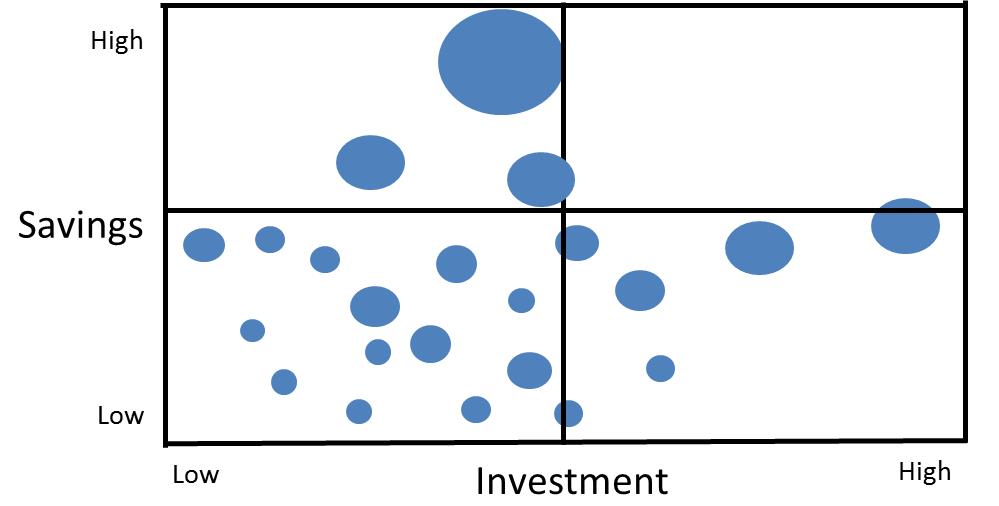In an article in the June issue of Harvard Business Review, author Gary.P.Pisano explains the importance of innovation strategy and the different types of innovation that can be pursued through differentiation in business model and technology. Regarding routine innovation, he shares the view that it is simplistic to consider routine innovation as suicidal and myopic. To substantiate this he quotes a few examples of organizations such as Microsoft and Intel that have generated significant savings from routine innovation in their products and services. The notion, that routine innovation is shortsighted, truly exists in organizations. The reasons may be varied.
One reason is the small incremental improvements that some of these routine innovations generate. This makes sense in the present scenario where organizations are expected to radically evolve to the dynamics of the competition as well as the demands of the market.
[EventPDF]
Routine innovations are happening everywhere in an organization; in design, shop floor, customer service and all other functions. In a large organization typically most of these innovations happen in silos, usually confined to a process step, in a function, in a certain site. In mature organizations, the team in charge of promoting innovation or continuous improvement promulgates these innovations using online platforms, networking sessions, and other channels for cross pollinating the ideas. After cross sharing, usually it is left to the individual teams to implement these innovations. Due to resource constraints and the workload that the teams have to handle daily, most of these innovations will not get implemented in the end. As a result the true potential of some of the innovations which can be implemented across the organization never gets unlocked.
To avoid these we need to analyze every innovation or improvement and evaluate whether it can be leveraged or not. There are different ways in which we can analyze and evaluate one.
Aping the Innovation
This is the most straightforward and easiest method. An organization with multiple sites can easily copy innovations done in a process step in a certain site, and implement it on the same process step in other sites. If not expressed in monetary terms, the effort and savings will be relatively same for any site irrespective of the geographic location. For example an innovation made to a customer service back-end process in one location can be easily applied to the same step done in another location.
Adopting the Innovation
This is the method of mimicking the innovation and applying it to similar products or processes. Example is an improvement, made to a manufacturing process step for a product, which can be easily applied to a similar product of the same family. The solution may involve only small changes to the idea behind the innovation. Depending on the scenario, the effort to implement and the potential savings will be slightly different than the original one.
Adapting the Innovation
This is the method of understanding the idea behind the innovation and rescoping it to apply to a totally different process or product or domain. Example is borrowing an idea implemented at shop floor and adapting it to a process in HR or Finance. A recent example is the experiments that large banks are currently conducting to adapt the block chain technology used in bitcoins for implementing in financial trading. Adapting the innovation may involve modifying the solution but follows the idea behind the innovation to devise the new solution. As a result the effort to implement and the potential savings will be radically different from the original one in some cases.
A large organization with many functions and sites may systematically analyze the routine innovations along the 3 dimensions viz. Ape (A1), Adopt (A2) and Adapt (A3). A Routine Innovation Analysis Table like the one shown below will help in the analysis. If there are lot of routine innovations to consider, a screening may be done to identify the potential ones for further analysis.
In this example, analysis shows that Routine Innovation - 1 (RI-1) implemented in Site 1 can be aped (A1) in Site 2. Routine Innovation - 3 (RI-3) implemented in process A in Site 1 can be adapted (A3) for process B and the same can be adopted (A2) for process A and B for another product line Y in the same Site. The same innovation can then be aped (A3) in processes A and B in Site 2. Systematically analyzing the innovations along the 3 dimensions will help to unlock the potential of each of them and will help us to evaluate whether it can be leveraged or not.
After analyzing the routine innovation along the 3 dimensions, calculate the total savings and investment required for each innovation. Plot it on a Routine Innovation Map as shown below. The size of the bubble in the map indicates the number of processes that can be improved by the application of the innovation idea. Big bubbles that are in the upper left quadrant have high ROI and they are the potential innovations that can be easily implemented across the organization. They will also benefit a large number of processes or functions in the organization.
Mapping the innovations in this way makes it easier to visualize and identify the potential ones. It will also help the senior management to prioritize resources in terms of money and manpower to implement those innovations that give high ROIs.
A systematic analysis and evaluation of your routine innovations will unlock the potential of each of them. Perhaps you won’t know that one of the ideas that were implemented on your desk becomes an organization wide initiative. The real savings generated as a result of implementing the selected innovations will also help to change the perception towards routine innovation in the organization.













